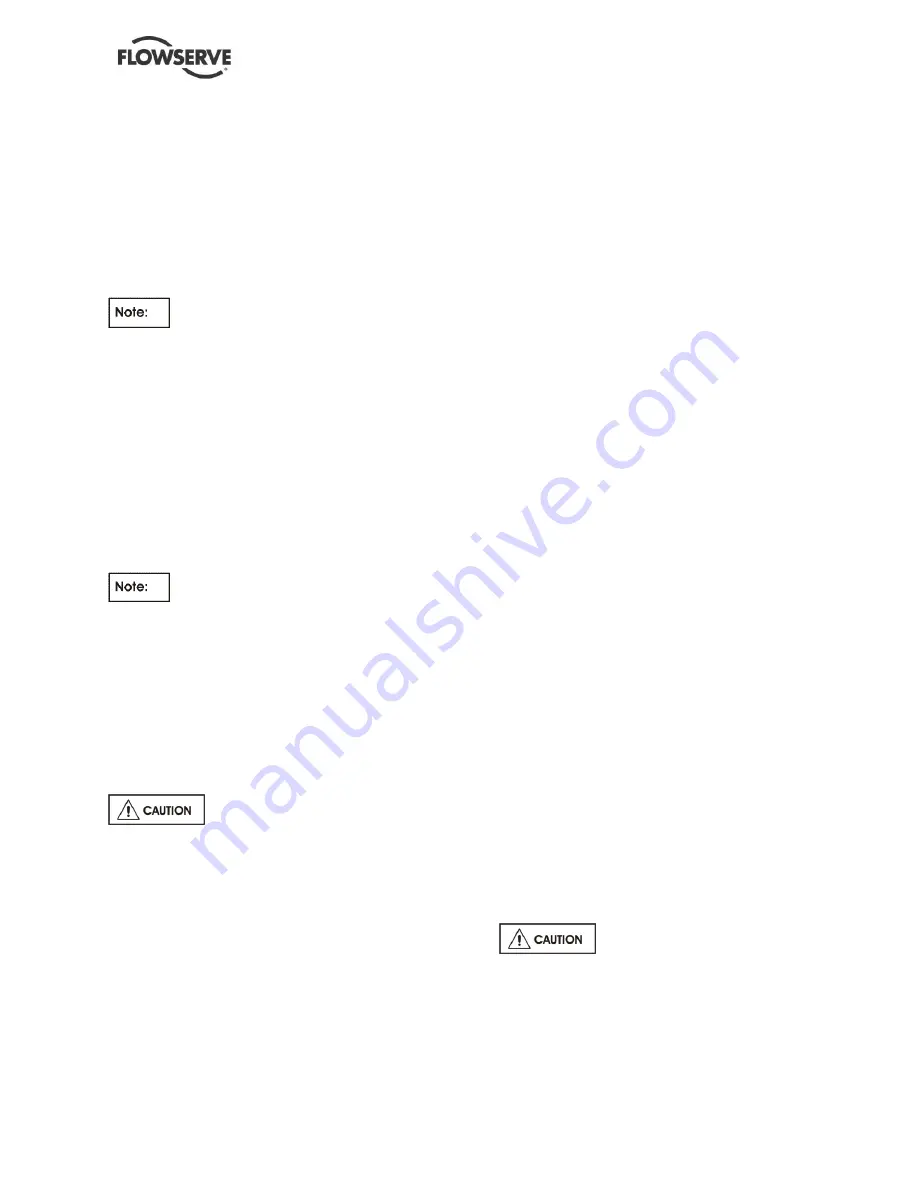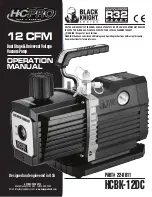
WIK USER INSTRUCTIONS ENGLISH BO2662 5/09
Page 57 of 76
d) Checking shaft straightness, section
6.8.2.7.3, and
e) Checking fit of impellers and balancing
drum with shaft, section 6.8.2.7.4.
2) Before starting to assemble parts, see
paragraph titled stage number system and
balanced parts (section 6.7.8.2) above, for a
description of the impeller [2200], impeller key
[6700.4], and split ring [2531] numbering
system.
If Impellers [2200] are equipped with
wearing rings [2300], see that rings are completely
installed. Rotor shall be assembled as it is to
operate in the pump.
3) Assemble rotor:
a) Install rotating parts only on shaft [2100].
b) Use instructions and sequence from below.
4) Wrap nylon lifting strap around shaft [2100]
between first and second-stage impellers
[2200], and attach hoist. Using both hoists, tip
rotor until it is horizontal. Place bearing
surfaces in soft-faced V-blocks (or equivalent)
Rotating parts must be at room
temperature when performing step 5.
5) With bearing surfaces in soft-faced V-blocks
(or equivalent), rotate element and take
readings with dial indicator at several place on
shaft [2100], center of pressure reducing
balance drum [6230], and surfaces of each
impeller hub and skirt. Verify that total runout
does not exceed maximum given in section
10.3.
Should total runout exceed
maximum given in section 10.3, the cause must be
determined before proceeding further. Usually
excessive runout is caused by a wrong part or
improper assembly procedure
6) With concentricity of rotating assembly verified
and with rotor still in V-blocks, strip the shaft
[2100] by following the instructions and
sequence from disassembling internal
assembly (section 6.7.8) above.
6.8.2.7.6
Renewing Impeller Wearing
Surfaces
If the impeller is not equipped with a wearing ring,
the skirt and hub wearing surfaces may be ground
lightly to restore concentricity; however, to provide
assurance that the design features of the impeller
[2200] are retained and that pump operation will
not be impaired by the renewing process, there
are conditions to meet:
1) The original diameter of skirt or hub must
never be decreased by more than maximum
decrease given in section 10.3.
2) The impeller [2200] bore must be true (see
checking fit of impeller and balancing drum
with shaft (section 6.8.2.7.4) above and must
be perfectly centered while grinding so that
skirt and hub wearing surfaces run true to
shaft [2100] bore. The surface shall be
finished as specified in section 10.3.
3) The impeller [2200] must be dynamically or
two-plane balanced. To achieve balance,
metal should be ground off the outside surface
of the shroud but to avoid weakening the
shroud, not from one spot.
4) New undersized stationary wearing rings
[1500] and bushings [1600 &1610] must be
installed to maintain the proper running
clearance (see section 6.8.2.7.2) above. For
details about obtaining undersized parts from
Flowserve Service Department, see section
6.2.1
5) A record should be kept of the decrease in
skirt and hub diameters and the undersize of
wearing rings and bushings.
6.8.2.7.7
Replacing Stationary Wearing
Rings
The instructions in this paragraph apply to
replacement of wearing rings [1500] in stationary
parts. Unless the impeller skirt wearing surface
has been, or is to be, ground down see renewing
impeller wearing surfaces (section 6.8.2.7.6)
above, a wearing ring [1500] with finish stock left
on the running surface, or the standard size
wearing ring [1500], should be used for
replacement. A wearing ring [1500], whether
standard or undersize, is manufactured to be
pressed into its parent part. The following
procedure will guide you in the replacement of a
wearing ring:
Striking or cutting into parent metal
of stationary part will make replacement necessary.
1) Machine off, or using rotary file grind off, welds
that wear ring locking keys [6700.3] to metal of
parent part or drill out set screws, whichever is
applicable.
2) Press out or using aluminum drift (or
equivalent), knockout wearing ring [1500].
















































